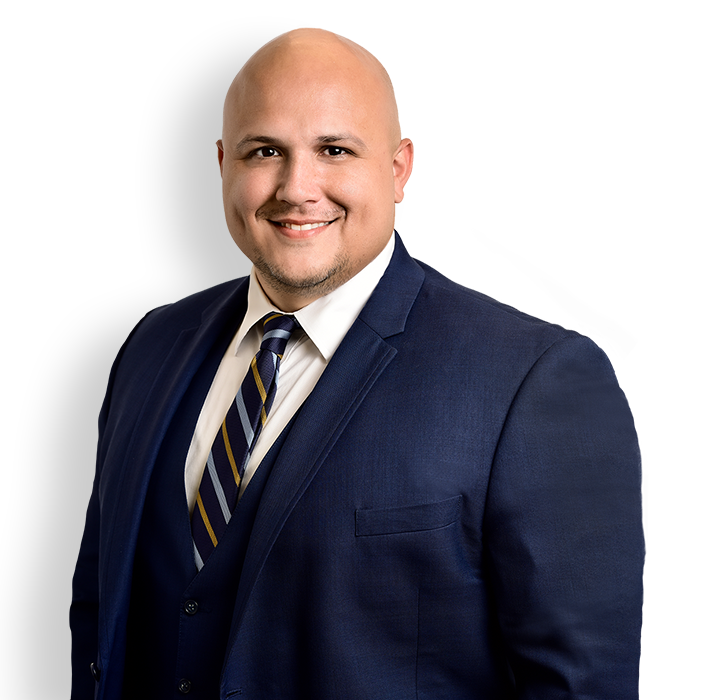Justices Could Impede Court Access With Medicaid Ruling

As published in Law 360 on October 31, 2022.
For over 50 years, providers and beneficiaries of federally funded programs like Medicaid, which are authorized via spending clause legislation, have had access to federal courts when state officials violate certain civil rights.
In Health and Hospital Corporation of Marion County, Indiana v. Talevski, the U.S. Supreme Court is presented with the opportunity to decide the extent to which these protections will survive. The case will be argued before the court on Nov. 8.
Talevski could be decided on the fairly narrow grounds that the particular statute at issue in the case — the Federal Nursing Home Amendments Act, or FNHRA — is not a rights-producing statute.
However, the court may also take the opportunity to reexamine long-standing precedent that the Civil Rights Act of 1871, codified at Title 42 of the U.S. Code, Section 1983, provides plaintiffs access to federal courts when states violate rights guaranteed by laws enacted under Congress’ spending clause powers.
If the court goes down that path, the decision could affect millions of beneficiaries of federally funded programs administered by the states — like Medicaid, the Supplemental Nutrition Assistance Program, the Children’s Health Insurance Program and Temporary Assistance to Needy Families — taking away their access to federal courts to prevent the denial, reduction or termination of civil rights.
How We Got Here
In court filings dating back to 2019, Gorgi Talevski’s wife brought suit under Section 1983 against a nursing facility where her husband was a resident. The suit alleged violations of the FNHRA, claiming that Talevski’s rights to be free from chemical restraints and certain resident transfer and discharge procedures had been violated.
The U.S. District Court for the Northern District of Indiana dismissed the case for lack of a claim. However, the U.S. Court of Appeals for the Seventh Circuit reversed the lower court’s opinion, and held that FNHRA confers a right enforceable under Section 1983.
In its pleadings, the nursing facility, operated by a county, steadfastly denied any wrongdoing. Notably, the nursing facility argued there are no private rights of action (1) under Section 1983 with respect to the specific FNHRA provision at issue; and (2) and under spending clause legislation more broadly.
On May 2, the Supreme Court granted the nursing facility’s petition for certiorari.
The Issues Before the Supreme Court
The high court may decide (1) whether it should reexamine its holding that spending clause legislation can give rise to private rights of action under Section 1983; and (2) depending on the answer to that question, whether the provisions of FNHRA at issue in Talevski do so. To date, over 30 amicus briefs have been filed by stakeholders both for and against any such private rights of action.
With respect to whether Section 1983 confers a private right of action for any spending clause legislation, those siding with Talevski argue that the court has recognized the right of individuals to enforce spending clause statutes through Section 1983 for over 50 years.
This being the case, they argue, principles of statutory stare decisis require adherence to that interpretation. They also argue that in 1994, Congress amended the Social Security Act — of which Medicaid is a part — to expressly recognize private rights of action under Section 1983.
Those supporting the nursing facility, on the other hand, argue that spending clause enactments, such as Medicaid, should be excluded from private enforcement under Section 1983, because these enactments are essentially contracts between the federal government and the states, and third parties could not enforce contracts at the time Section 1983 was originally enacted over 150 years ago.
With respect to whether Section 1983 confers a private right of action under the specific FNHRA provision at issue, some amicus briefs have emphasized that the court need not reexamine its prior spending clause legislation holdings to rule on this case. The court could rule that private rights of action do not exist under the specific patient rights and transfer obligations at issue under FNHRA, without reexamining its spending clause holdings more broadly.
In recent years, the court has begun to lay the groundwork as to how their decision may land.
The Erosion of Rights Providing Access to Federal Court
The history of Section 1983 litigation by beneficiaries and providers is robust. In 1980, the Supreme Court held in Maine v. Thiboutot that the text of Section 1983 “undoubtedly embraces” claims against state actors who violate rights secured by the Social Security Act or other federal laws grounded in the spending clause power.
Ten years later, in Virginia Hospital Association v. Wilder, the court held in a close decision that Section 1983 could be used to enforce Medicaid reimbursement rights under the now defunct Boren Amendment. The Wilder decision then led to a series of lawsuits against states by health care providers seeking higher Medicaid rates.
Ultimately, in 1994, Congress intervened by establishing two identically worded provisions that rejected a rule which would foreclose Section 1983 private rights of action related to statutes imposing Medicaid state plan requirements. Arguably, this demonstrates that Congress ratified the application of Wection 1983 to Social Security Act programs. However, the stage was set for the high court to start limiting these rights.
In Blessing v. Freestone, an important 1997 decision regarding eligibility for child support services, the court established three principal factors for determining whether a statutory provision creates privately enforceable rights: (1) whether the plaintiff was an intended beneficiary of the statute; (2) whether the plaintiff’s asserted interest was judicially enforceable; and (3) whether the statute imposed a binding obligation on the state.
Then, in its 2002 decision in Gonzaga v. Doe, the court continued to narrow its prior decisions, explaining that Section 1983 could only be used to enforce federal rights guaranteed by programs such as Medicaid against encroachment by a state when those federal rights were “clear” and “unambiguously” granted.
Over the next decade, the court continued to chip away at authority providing a private right of action. For example, in Armstrong v. Exceptional Child Center, the court ruled in 2015 that a provider could not rely on the supremacy clause of the Constitution, or a court’s general equity authority, to enforce Medicaid reimbursement requirements.
The Armstrong case, while significant, was specific to Medicaid’s equal access reimbursement standard and claims brought directly under the supremacy clause, and did not stand for the proposition that private rights of action under the other traditional avenues, such as Section 1983, were unavailable. Talevski could change that.
The Implications Couldn’t Be Greater
In light of cases like Blessing, Gonzaga and Armstrong, beneficiaries and providers already have limited options to hold states accountable for not fulfilling obligations established under federal law.
The court could further utilize the Talevski case to peel back the ability of individuals to turn to the federal courts when they believe their rights to an entire array of state-administered public welfare programs have been violated.[1]
Without the benefit of Section 1983, states neglecting the rights of the most vulnerable individuals may face virtually no consequences. A state could elect to reduce or eliminate the rights of Medicaid beneficiaries, arbitrarily exclude certain providers from program participation, deny covered treatments or improperly reimburse safety-net providers without having to face the prospects of judicial intervention.
In such situations, individuals as well as health care providers are left with few alternatives for relief. These aren’t simply hypothetical situations. In one of many examples, in 2004, the court forced Texas to provide basic health care services to Medicaid-eligible children after a protracted court battle where relief was expressly sought under Section 1983.
Possible Consequences of a Ruling Against Private Rights of Action
Since Armstrong, providers and beneficiaries have been unable to sue under a preemption theory to enforce Medicaid’s equal access provision, resulting in their inability to ask a court to compel states to set payment rates in a way that does not negatively affect beneficiary access to services.
While Armstrong preserved an ability to assert a claim challenging federal approval of the Medicaid state plan amendment at issue under the Administrative Procedure Act, such claims are generally subject to deference to federal agencies, and can be quite challenging and time-consuming.
In certain circumstances, the federal government may step in to remedy violation of law, but beneficiaries and providers may have little ability to elicit the government’s help — and, of course, the federal government may choose whether to intervene.
For example, as part of its Medicaid oversight, the U.S. Department of Health and Human Services has the ability to intervene to remedy violations of law. But the enforcement process is frequently long and arduous, and individuals and providers have limited ability to seek HHS help. HHS intervention is discretionary, and the agency cannot do what a court does: immediately order state officials to stop violating the law.
Rather, the federal government’s only sanction authority is to deny federal Medicaid funds, which is typically at odds with the interests of beneficiaries and providers. Finally, it is worth noting that Congress often does not explicitly provide for a private right of action when it enacts federal legislation, and thus whether one can be implied often becomes problematic.
The Stage Is Set
Most believe that the question of whether to foreclose Section 1983 private rights of action in the case of Medicaid and similar federal programs is a matter of fundamental health equity and equal justice under the law — such as for people with disabilities, as well as racial and ethnic minorities who are disproportionately represented in such programs.
Any decision altering the existing status of the law could significantly impede, if not eliminate, the necessary oversight of these programs provided by such private actions, and open the door for states and local government institutions to be largely unaccountable for their actions.
This being the case, the court faces a decision of potentially enormous implications, with widespread impact. But as it has demonstrated in its ruling in Dobbs v. Jackson Women’s Health Organization, overturning Roe v. Wade, the present court is not afraid to set aside decades of legal precedent. Whether it will elect to do so in Talevski, only time will tell.
[1] Some have argued that a broad ruling may also undercut individuals’ rights to sue to enforce Title IX of the Education Amendments of 1972 (prohibiting discrimination based on sex), Title VI of the Civil Rights Act (prohibiting discrimination based on race, color or national origin), and Section 504 of the Rehabilitation Act (prohibiting disability discrimination).
The opinions expressed are those of the author(s) and do not necessarily reflect the views of their employer, its clients or Portfolio Media Inc., or any of its or their respective affiliates. This article is for general information purposes and is not intended to be and should not be taken as legal advice.
Professional
Related Capabilities
For more information, please contact Paul Garcia Los Angeles/San Diego, Erin Sclar in San Francisco, or your regular Hooper, Lundy & Bookman contact.

